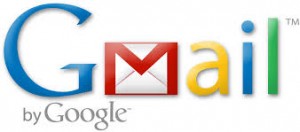It seems that Google is extending its well-known crusade against spam to its popular email platform, Gmail. It all started a little under a year ago with Google’s introduction of the tabbed inbox. One of the most notable (and controversial) aspects of the new setup is that it automatically decides what your most important email is and sends it to the “Primary” tab in your inbox, while simultaneously shunting lower-priority messages (ie those from businesses and marketers) into the “Promotions” tab.
 At the time, many email marketers expressed their dismay at the changes, since it seems the new setup lowers email open rates for those who manage a subscriber list.
At the time, many email marketers expressed their dismay at the changes, since it seems the new setup lowers email open rates for those who manage a subscriber list.
Now that acceptance has set in, Google is once again shaking the email marketing world with the introduction of a new Gmail unsubscribe tool. Up until this point, Gmail users had to hunt for an unsubscribe link typically found at the bottom of promotional messages. Now, a new button will appear alongside the subject line of these messages. This means that users don’t have to leave Gmail (or even open the message) in order to unsubscribe from the list.
While it’s easy to see how all of these changes can improve the user experience, does it mean the death knell is being sounded for email marketers?
Far from it.
What it means is that any businesses looking to use email marketing to reach their customers must now consider how valuable and desireable their content and messages really are. Because the truth is if your content is interesting to the people you are trying to target, then they will actively wait and look for your emails. But, it means you need to be putting in the necessary time and the effort to connect with these people and understand their wants and needs. In other words, the relationship part of the customer experience is all the more important now- not just in your email marketing, but in all your promotional efforts.
So, in a way, the changes to Gmail represent a great opportunity for email marketers and the businesses behind them, because it practically forces businesses to look at their customers as people and not just email open rates, click throughs, sales conversions, and other such numbers. And, that is a very profitable proposition.











